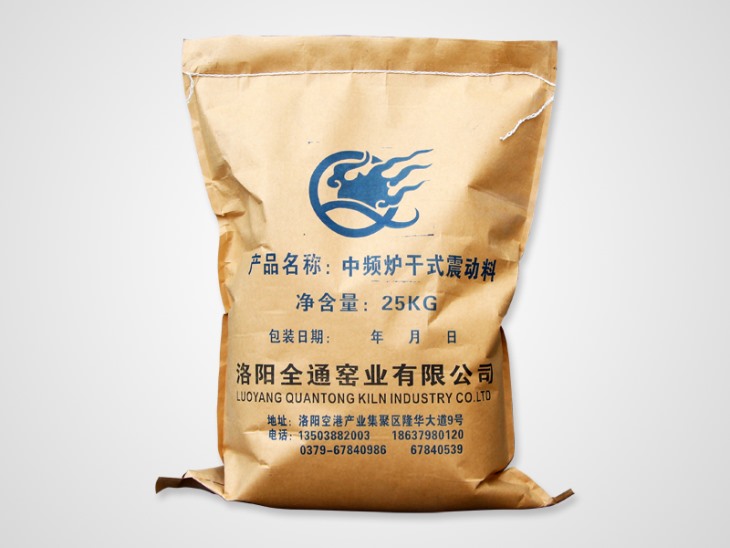What are the differences between ramming material and castable material?
Ramming materials and castables are both refractory materials and are widely used, but there are still differences between the two:
1. Differences in material composition: The ramming material is mainly composed of aggregates and powders with a certain particle gradation plus a binder, and the additive is mainly made of unshaped refractory materials that are constructed by manual or mechanical ramming. The ramming material includes corundum ramming. ramming material, high alumina ramming material, silicon carbide ramming material, carbon ramming material, siliceous ramming material, magnesium ramming material like electric furnace bottom ramming material using silicon carbide, graphite, electric calcined anthracite as raw materials , Mixed with a variety of ultra-fine powder additives, fused cement or composite resin as a binder made of bulk material. It is used to fill the furnace body cooling equipment and masonry gaps or masonry leveling layer fillers. Castables It is a granular and powdery material made of refractory material with a certain amount of binder. It has high fluidity and is suitable for unshaped refractory materials formed by casting method. The three major components of the castable are the main components and the additional components. The three kinds of impurities and impurities are divided into: aggregates, powders and binders. The raw materials of aggregates are silica, diabase, andesite and waxstone.
2. The difference between the applicable range of construction: when the ramming material is used for ramming construction, Luoyang Quantong Kiln Industry (ramming material manufacturer) recommends that attention must be paid to uniform force and smooth construction. The ramming material is generally used for refractory brick masonry. To the kiln parts that may be difficult to masonry, the construction of the ramming material is relatively simple, and it is used to fill the gap between the body cooling equipment and the masonry or the filler for the leveling layer of the masonry.
The castables are mainly used to construct the lining of various heating furnaces and other overall structures. Some high-quality types can also be used in smelting furnaces. For example, aluminate cement refractory castables can be widely used in various heating furnaces and other slag-free and acid-free castables. In thermal equipment corroded by alkali. In the parts that are corroded by molten iron, molten steel and slag and have high working temperature, such as tapping groove, ladle and blast furnace shaft, tapping groove, etc., low calcium and Refractory castable made of pure high-alumina cement-bound high-quality granular and powdery materials with high alumina content and good sintering. Another example is phosphate refractory castable, which can be widely used in heating furnaces and heating metal soaking In the furnace, it can also be used in coke ovens and cement kilns that directly touch the material.
In some parts of metallurgical furnaces and other containers that are in direct contact with slag and molten metal, it is also good to use high-quality phosphate refractory castables for repair. To sum up, castables can be used for casting and molding of key parts of the furnace body, such as Furnace door frame, near the feeding port; the molten metal pouring runner is generally formed by casting with castables. After a period of use, the castables will fall off and need to be repaired regularly.

Related Industry Knowledge
- Features and Benefits of Coil Clay
- What are the advantages of a good furnace lining
- Misunderstandings in the use of ramming materials in intermediate frequency furnaces
- Phenomenon analysis of failure of argon blowing of ladle permeable bricks and how to improve the rate of argon blowing
- Where is the consumption reduction and energy saving of breathable bricks reflected?
- How to improve the service life of intermediate frequency furnace lining
- Reasons for damage to intermediate frequency furnace lining and how to solve them
- The performance and advantages of breathable brick
- Analysis of Structural Characteristics of Dispersive Breathable Bricks
- The intermediate frequency furnace charge knotting process needs to pay attention to details sharing
- What are the requirements for the production materials of breathable bricks?
- Analyze the energy consumption and energy saving performance of breathable bricks
- What are the production process and control points of breathable bricks
- What are the effects of the lining material on the foundry electric furnace
- How to choose acid furnace lining correctly
- Will the ramming material be chemically attacked?
- Ramming material manufacturers teach you how to improve crack resistance
- How to use electric furnace lining to repair electric furnace
- What are the advantages of using converter breathable bricks?
- What are the main characteristics of the use of refractory bricks


